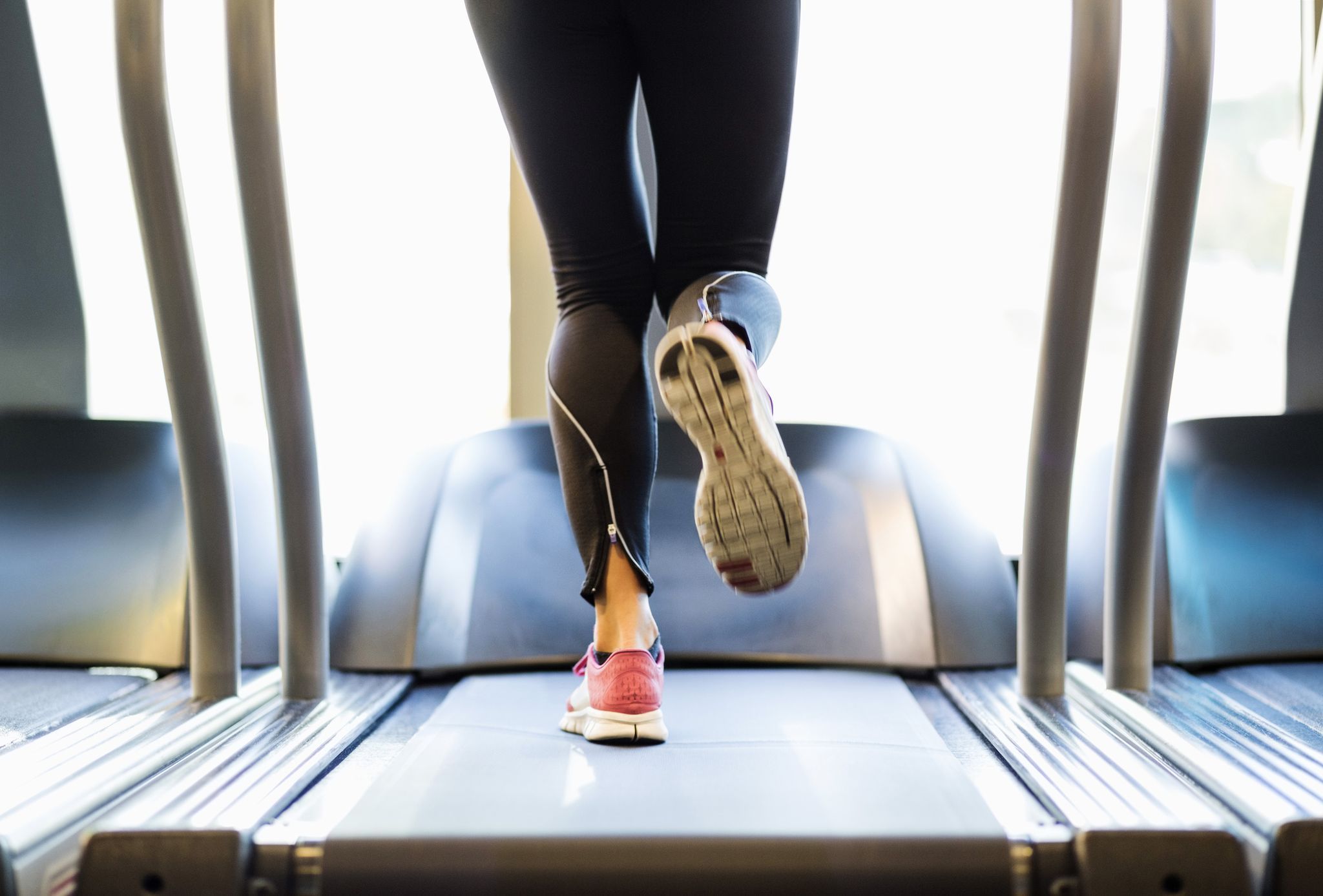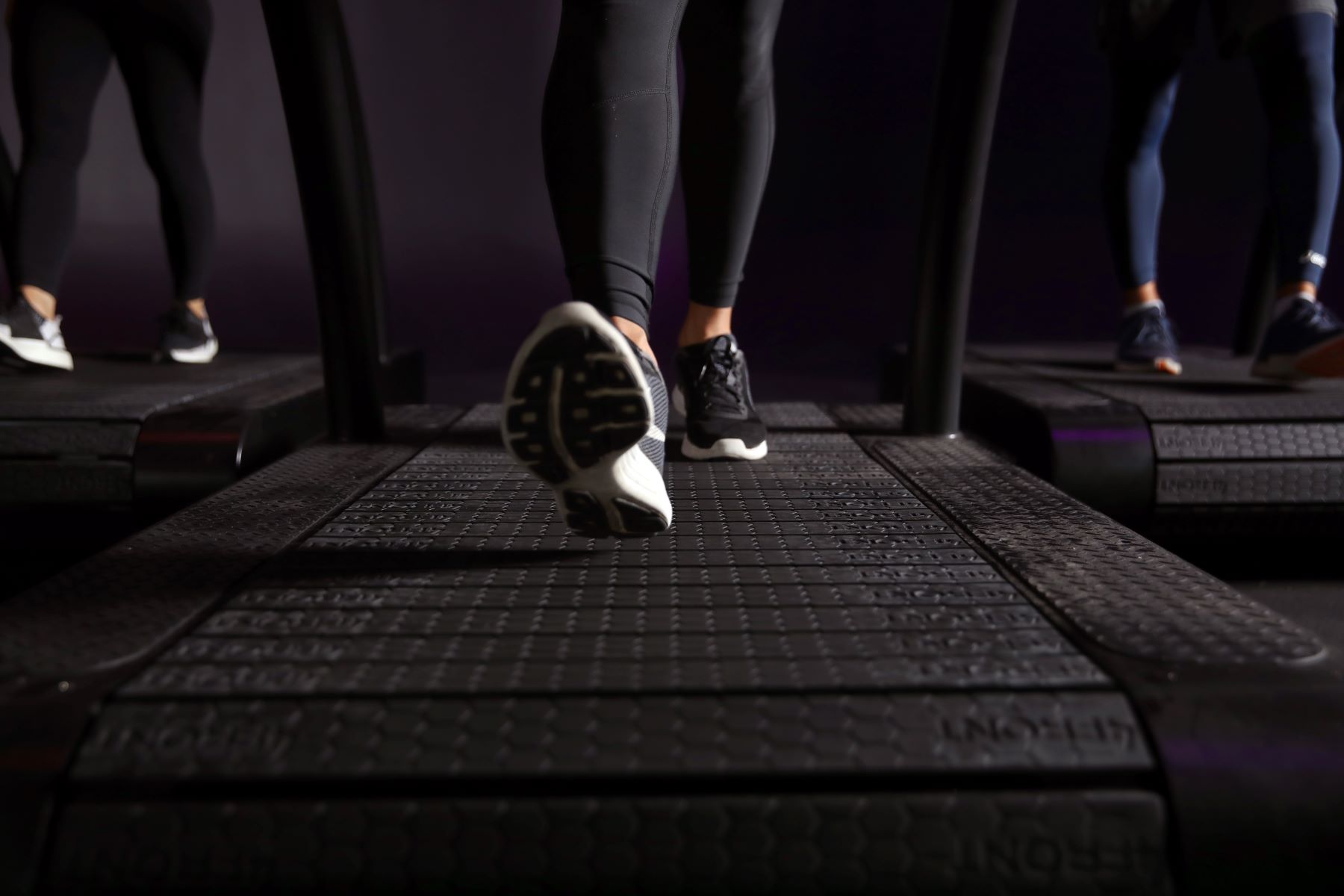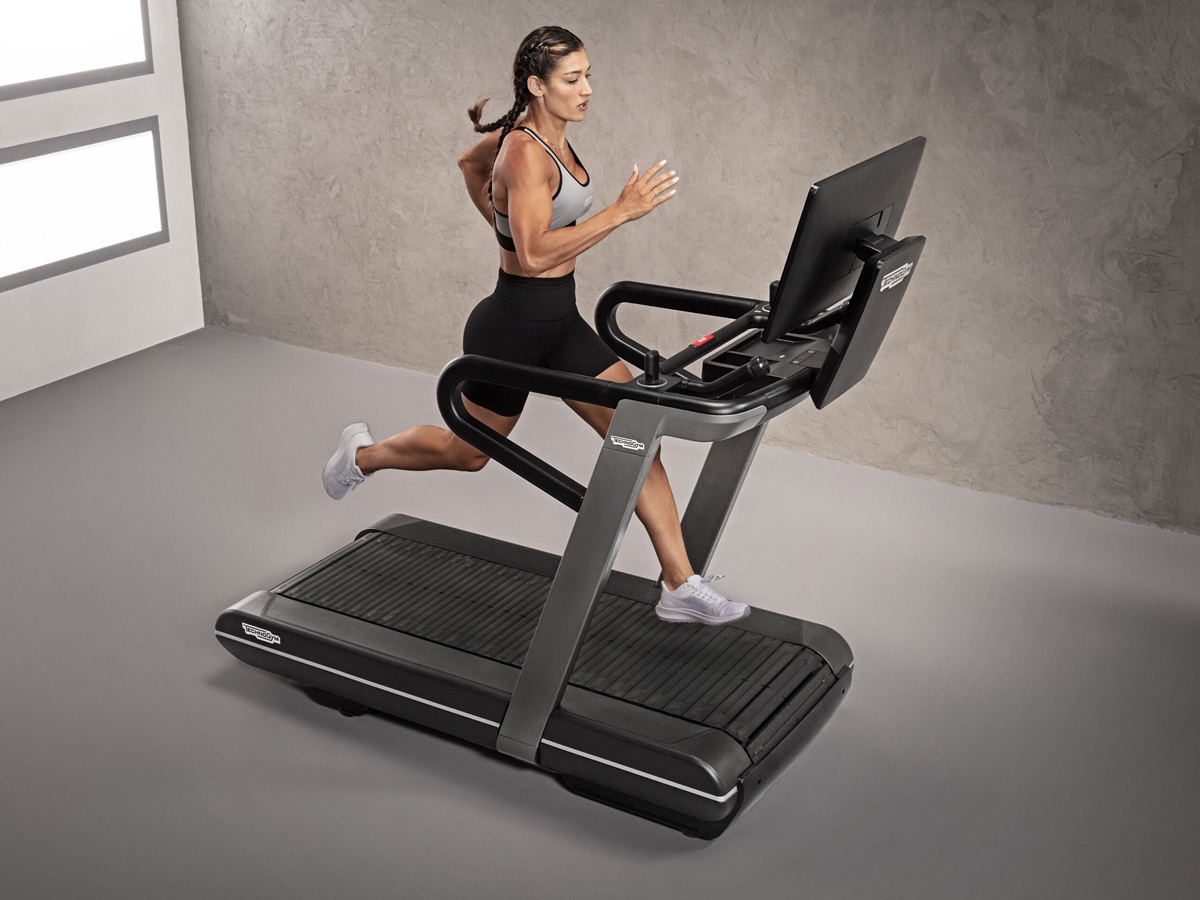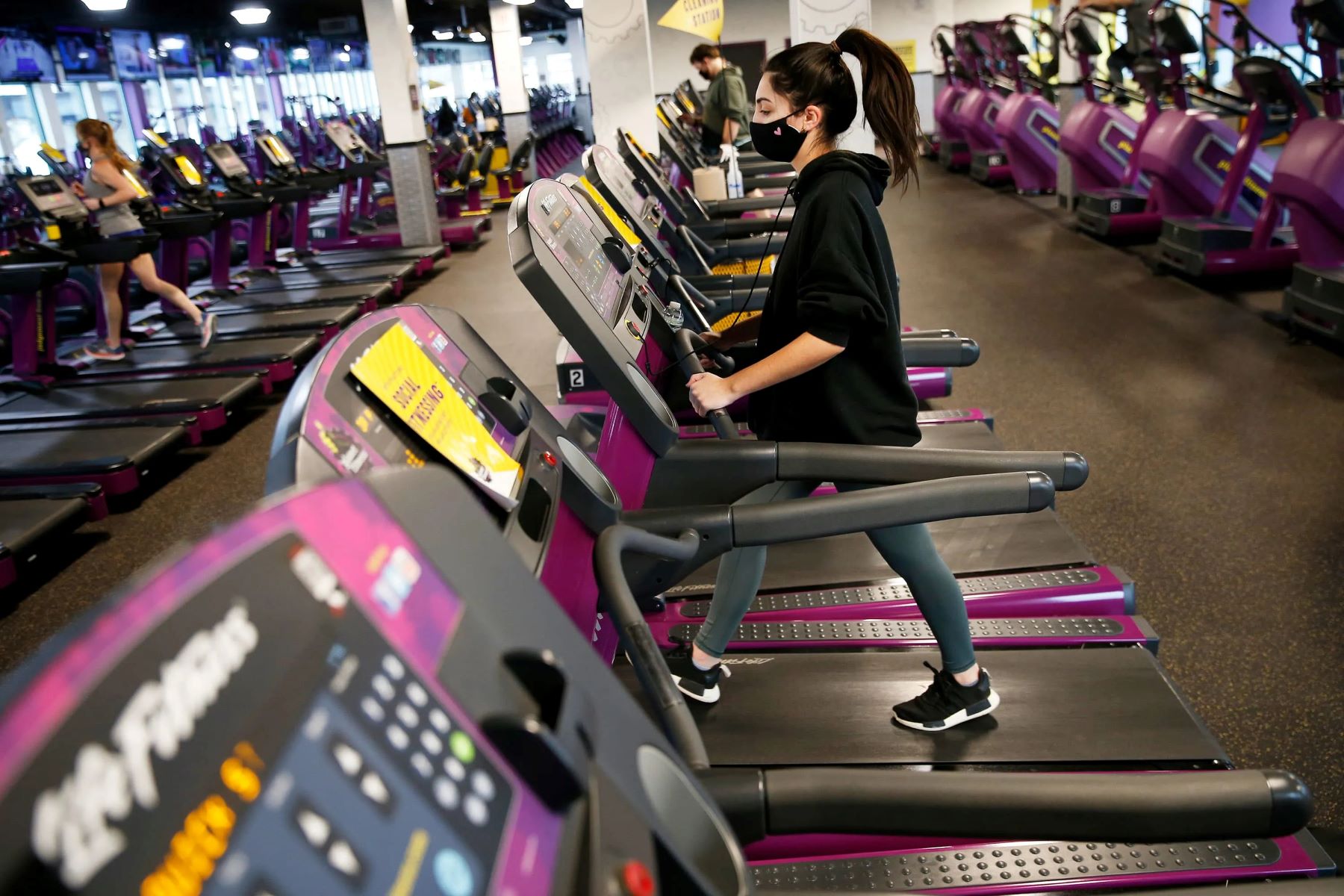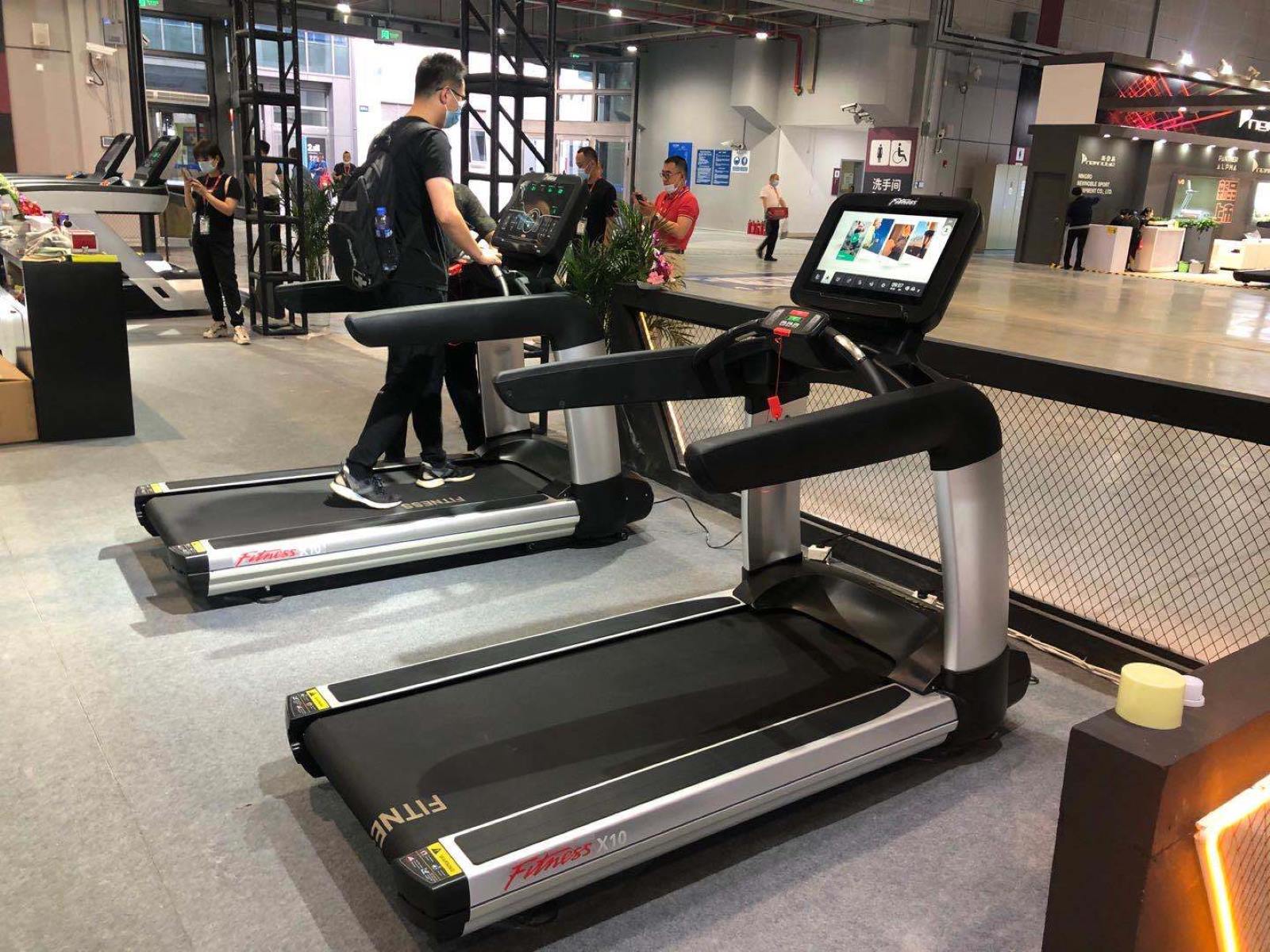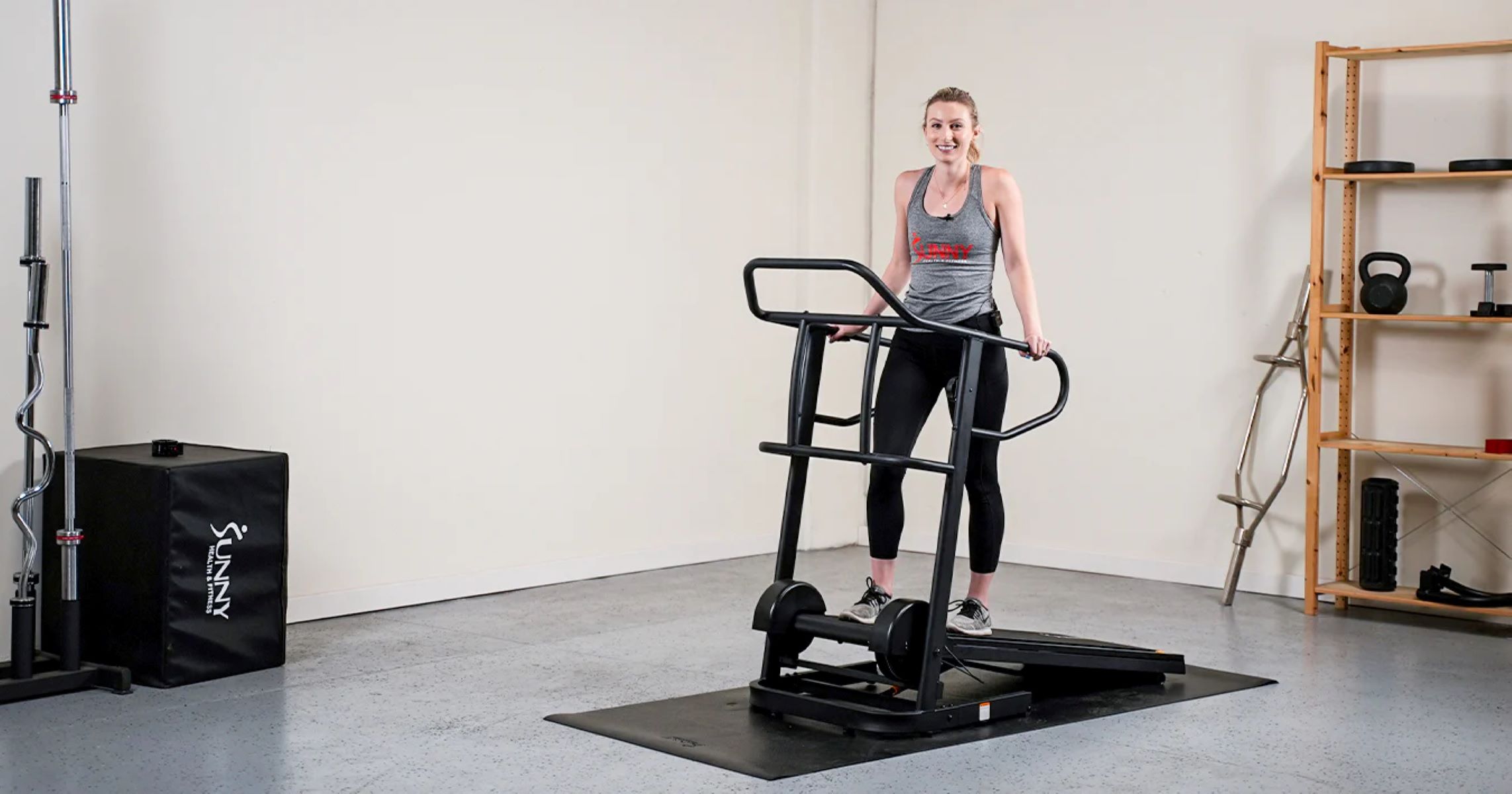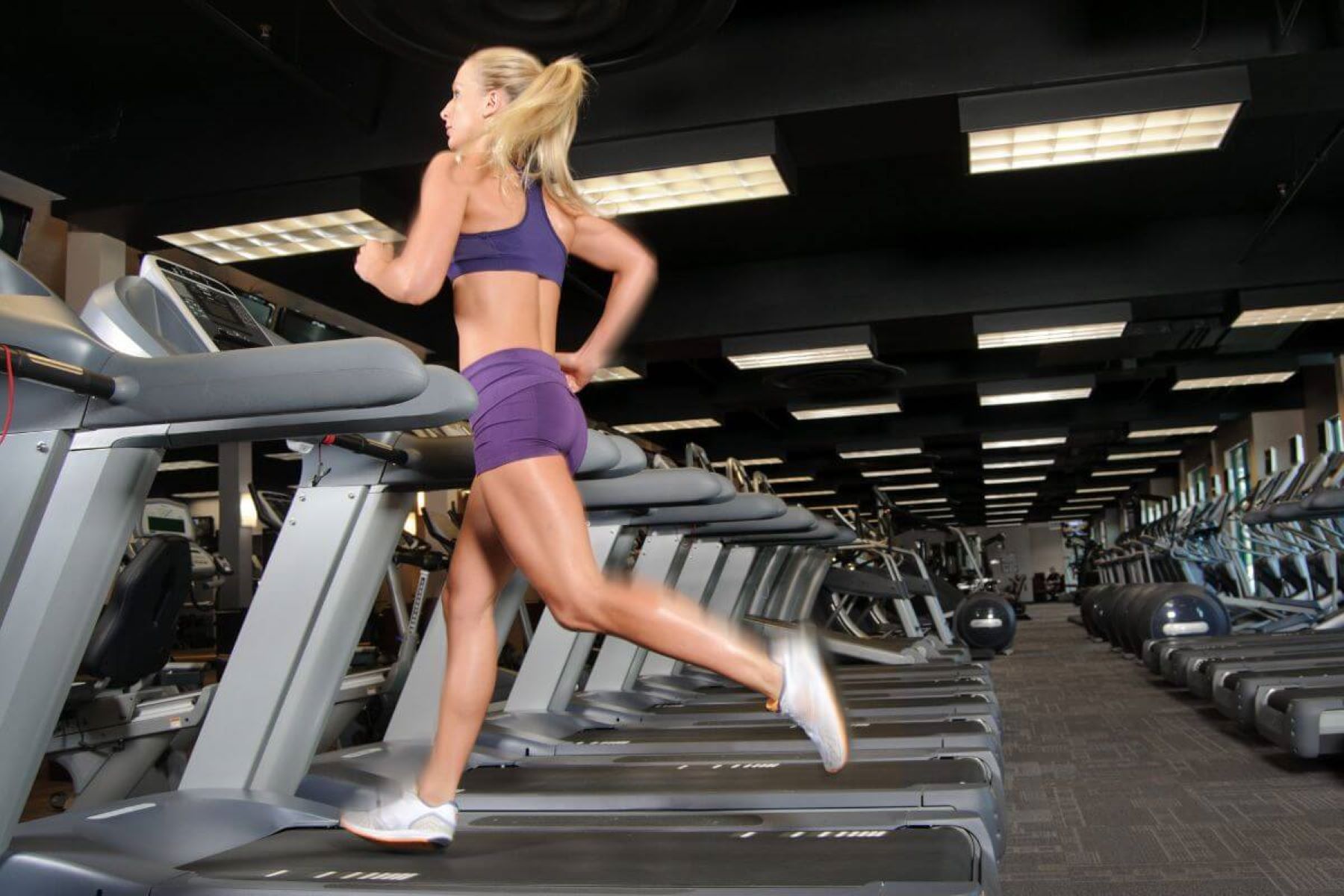Home>Misc>Featured>How To Stretch Before Walking On The Treadmill
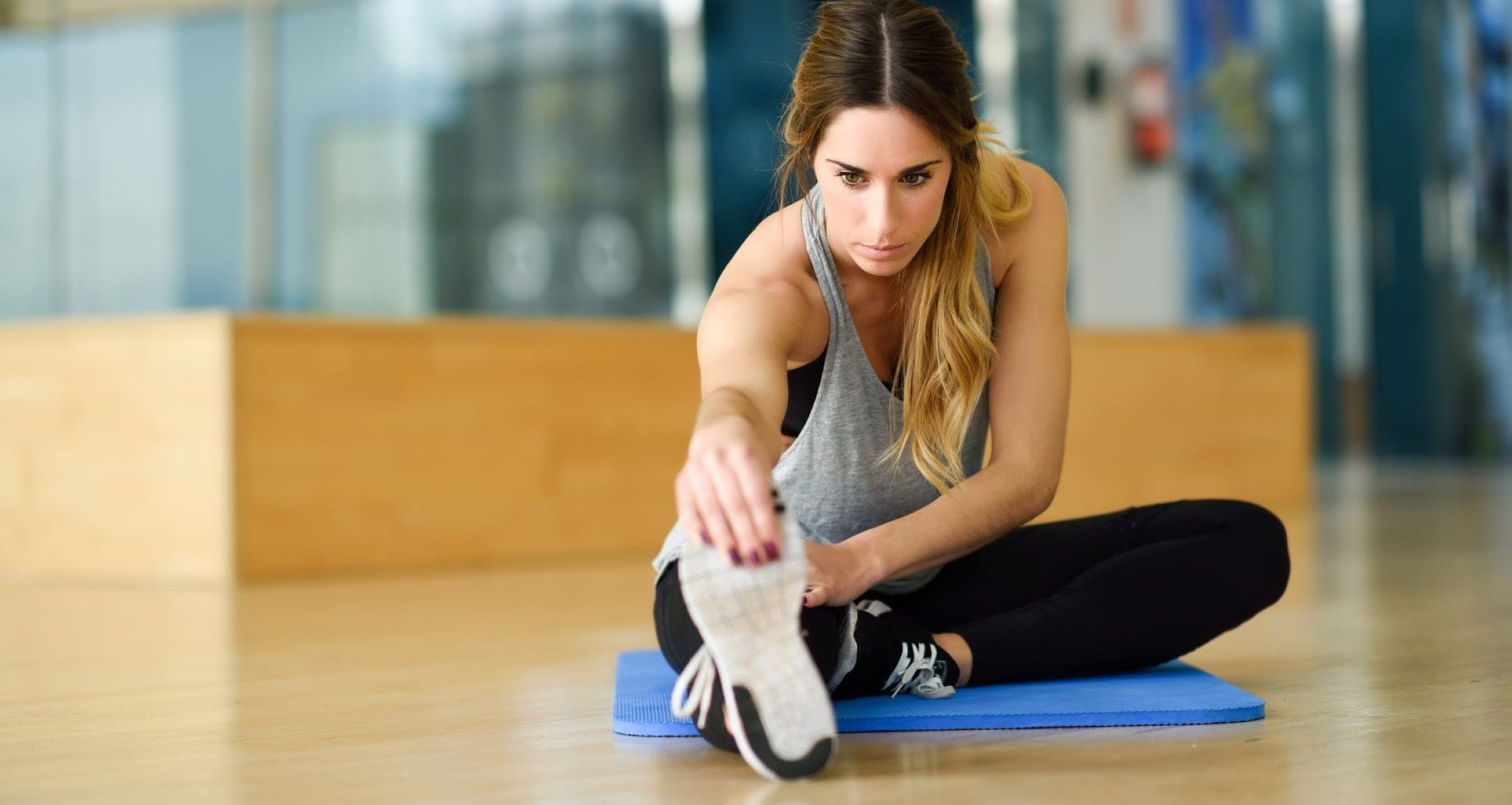

Featured
How To Stretch Before Walking On The Treadmill
Modified: August 19, 2023
Learn the proper way to stretch before using the treadmill. Featured article on how to prepare your body for a safe and effective workout.
Introduction
Are you looking to make the most out of your treadmill workouts? Stretching before stepping on the treadmill may not be something you’ve considered, but it can have a significant impact on your performance and overall workout experience. In this article, we will explore why stretching is important before walking on the treadmill and provide you with some effective stretching techniques to incorporate into your warm-up routine.
Walking on the treadmill is an excellent form of exercise for improving cardiovascular health, burning calories, and strengthening muscles. However, like any other physical activity, it’s crucial to prepare your body properly to prevent injuries and enhance performance.
Stretching before your treadmill workout allows you to gradually increase blood flow to your muscles, improve flexibility, and loosen up any tight areas. This warm-up routine primes your body for the upcoming intensity, making your treadmill session more efficient and enjoyable. It can also help reduce the risk of muscle strains, cramps, and other discomforts that could hinder your progress.
Whether you’re a fitness enthusiast or just starting your fitness journey, incorporating stretching into your treadmill routine is a simple yet effective way to optimize your workouts. In the following sections, we’ll explore different types of stretches you can perform before walking on the treadmill, so you can find the ones that work best for you.
Why is stretching important before walking on the treadmill?
Stretching plays a crucial role in preparing your body for physical activity, including walking on the treadmill. Here are some key reasons why stretching is important before you step on the treadmill:
- Increased flexibility: Stretching helps improve your flexibility by increasing the range of motion in your joints. This allows you to move more freely and with greater ease during your treadmill workout. Improved flexibility can also help prevent muscle imbalances and reduce the risk of injury.
- Enhanced performance: By stretching before walking on the treadmill, you prime your muscles and prepare them for the demands of the exercise. This can lead to improved performance, as your muscles are more prepared to handle the intensity and duration of your workout. It can also help prevent muscle fatigue and allow you to maintain proper form throughout your session.
- Reduced risk of injury: Stretching before your treadmill workout helps warm up your muscles, tendons, and ligaments, making them more pliable and less prone to strain or tears. It loosens up tight areas and increases blood flow, which can reduce the risk of muscle pulls, cramps, and other common injuries.
- Improved circulation: Stretching increases blood flow to your muscles, delivering oxygen and nutrients while removing waste products. This improved circulation can help improve your overall exercise performance and enhance recovery post-workout.
- Mental preparation: Stretching before walking on the treadmill can also provide an opportunity for mental preparation and focus. It allows you to take a moment to connect with your body, set intentions for your workout, and mentally prepare for the physical activity ahead.
Overall, incorporating stretching into your warm-up routine before walking on the treadmill is essential for priming your body, improving performance, reducing the risk of injury, and enhancing the overall effectiveness of your workouts. Now, let’s dive into the different types of stretches you can utilize in your pre-treadmill routine.
Types of stretches for warming up
When it comes to warming up before walking on the treadmill, there are two main types of stretches you can incorporate into your routine: static stretches and dynamic stretches.
- Static stretches: Static stretches are held for a prolonged period, typically around 20-30 seconds, without any bouncing or movement. These stretches help lengthen the muscles, increase flexibility, and improve overall muscle balance. Some examples of static stretches that are beneficial for warming up include calf stretches, quadriceps stretches, hamstring stretches, and hip flexor stretches.
- Dynamic stretches: Dynamic stretches involve active movements that mimic the actual movements you’ll be performing during your treadmill workout. These stretches help warm up the muscles and joints, increase range of motion, and improve blood flow to the working muscles. Examples of dynamic stretches include walking lunges, high knees, leg swings, arm circles, and trunk twists.
Both static and dynamic stretches have their benefits and can be effective in different ways. It’s important to listen to your body and choose the stretches that feel most comfortable and effective for you.
It’s worth noting that for most individuals, dynamic stretches are particularly beneficial before cardio-focused activities like walking on the treadmill. Dynamic stretches help activate and warm up the muscles in a more dynamic and functional manner, preparing them for the specific movements you’ll be engaging in during your treadmill workout.
Remember, the goal of stretching before walking on the treadmill is to warm up the muscles, increase flexibility, improve circulation, and reduce the risk of injury. By incorporating a combination of static and dynamic stretches into your warm-up routine, you can effectively prepare your body for the demands of your treadmill workout.
Now, let’s move on to the recommended warm-up routine that you can follow before walking on the treadmill.
Static stretches
Static stretches are a popular choice for warming up before walking on the treadmill. They involve holding a stretch for a certain period without any bouncing or movement. Static stretches help improve flexibility, increase muscle length, and prepare your body for the workout ahead. Here are a few static stretches you can include in your warm-up routine:
- Calf Stretches: Stand facing a wall with one foot forward and the other foot behind you. Keep your back leg straight and press your heel firmly into the ground. Lean forward while keeping your back straight until you feel a stretch in your calf. Hold for 20-30 seconds on each leg.
- Quadriceps Stretches: Stand upright and hold onto a wall or a chair for support. Bend one knee and bring your heel towards your glutes, grabbing your ankle with your hand. Gently pull your heel towards your glutes until you feel a stretch in your quadriceps. Hold for 20-30 seconds on each leg.
- Hamstring Stretches: Sit on the edge of a bench or chair with one leg extended straight in front of you. Bend your other leg and place your foot on the ground. Lean forward from your hips, reaching towards your extended foot while keeping your back straight. You should feel a stretch in the back of your thigh. Hold for 20-30 seconds on each leg.
- Hip Flexor Stretches: Step into a lunge position with one foot forward and the other foot behind you. Keep your back straight and press your back knee towards the ground. You should feel a stretch in the front of your hip. Hold for 20-30 seconds on each leg.
When performing static stretches, remember to breathe deeply and relax into the stretch without bouncing or forcing the movement. It’s important to stretch to the point of mild tension and discomfort, but not to the point of pain.
Incorporating static stretches into your warm-up routine before walking on the treadmill can help improve flexibility, reduce muscle tension, and enhance overall performance. These stretches target specific muscle groups and prepare them for the movements involved in your treadmill workout.
Now, let’s move on to dynamic stretches, which are another effective option for warming up before walking on the treadmill.
Dynamic stretches
Dynamic stretches are an excellent way to warm up your body before walking on the treadmill. Unlike static stretches, dynamic stretches involve continuous movement, mimicking the motions you’ll perform during your workout. These stretches help increase blood flow, activate the muscles, and improve range of motion. Here are a few dynamic stretches you can incorporate into your warm-up routine:
- Walking Lunges: Take a step forward with your right foot, lowering your body into a lunge position. Push off your back foot and bring it forward, repeating the movement with your left foot. Perform 10-12 lunges on each leg to warm up your hamstrings, quadriceps, and glutes.
- High Knees: Stand with your feet hip-width apart. Start jogging in place while lifting your knees up towards your chest. Alternate legs and continue for 30-45 seconds. This dynamic stretch helps warm up your hip flexors, quadriceps, and calves.
- Leg Swings: Hold onto a wall or a sturdy object for support. Swing your right leg forward and backward in a controlled manner, reaching as high and as far back as you comfortably can. Repeat the movement for 10-12 swings on each leg. This stretch helps warm up your hips, hamstrings, and hip flexors.
- Arm Circles: Stand with your feet shoulder-width apart. Extend your arms straight out to the sides. Begin making small circles with your arms, gradually increasing the size of the circles. After a few seconds, reverse the direction of the circles. Continue for 30-45 seconds. This dynamic stretch targets your shoulder muscles and improves upper body mobility.
- Trunk Twists: Stand with your feet hip-width apart. Place your hands on your hips or bring them together at chest level. Begin twisting your upper body from side to side, allowing your arms and shoulders to follow the movement. Perform 10-12 twists on each side. This stretch helps warm up your core, back, and oblique muscles.
Dynamic stretches should be performed in a controlled manner, with a fluid and rhythmic motion. These stretches not only prepare your muscles for the upcoming treadmill workout but also help improve coordination and overall body awareness.
Including dynamic stretches in your warm-up routine before walking on the treadmill can help increase blood flow, activate major muscle groups, and enhance your overall performance. These stretches mimic the movements you’ll be engaging in during your workout and prepare your body for the specific demands of treadmill exercise.
Now that you are familiar with static and dynamic stretches, let’s move on to the recommended warm-up routine that combines both for an effective pre-treadmill workout preparation.
Recommended warm-up routine before walking on the treadmill
To ensure you’re properly warmed up before walking on the treadmill, you can follow this recommended warm-up routine that combines both static and dynamic stretches:
- Start with a light cardio activity: Begin your warm-up routine by engaging in a light cardio activity such as brisk walking or jogging in place for 5-10 minutes. This helps increase your heart rate, warm up your muscles, and prepare your body for the upcoming stretches.
- Perform dynamic stretches: After your brief cardio activity, move on to dynamic stretches. Incorporate exercises like walking lunges, high knees, leg swings, arm circles, and trunk twists. Perform each exercise for 10-12 repetitions or for 30-45 seconds on each side.
- Transition to static stretches: After completing the dynamic stretches, transition to static stretches. Focus on stretching major muscle groups such as the calves, quadriceps, hamstrings, and hip flexors. Hold each stretch for 20-30 seconds on each side, making sure to breathe deeply and relax into the stretch.
- Pay attention to your breathing: Throughout the warm-up routine, pay attention to your breathing. Take deep breaths in through your nose and exhale through your mouth. This helps oxygenate your muscles and promotes relaxation.
- Focus on proper form: When performing each stretch, maintain proper form and alignment. Avoid bouncing or jerking movements, and listen to your body’s cues. Stretch to the point of mild tension, but never to the point of pain.
- Gradually increase intensity: As you progress through the warm-up routine, gradually increase the intensity of the stretches. Start with gentle movements and gradually move towards a deeper stretch, ensuring that your body is properly warmed up and ready for the treadmill workout.
Remember, the warm-up routine before walking on the treadmill is meant to prepare your body for the physical activity ahead. By incorporating a combination of dynamic and static stretches, you enhance blood flow, increase flexibility, activate muscles, and reduce the risk of injury.
Listening to your body and being mindful of proper form and breathing during your warm-up routine is essential to ensure a safe and effective treadmill workout. Take the time to properly warm up your muscles, and you’ll find that your walking sessions on the treadmill become more enjoyable and beneficial.
Now that you have learned the importance of stretching before walking on the treadmill and have a recommended warm-up routine at your disposal, it’s time to lace up those sneakers and get moving!
Conclusion
Incorporating stretching into your warm-up routine before walking on the treadmill is a simple yet essential practice that can greatly benefit your overall workout experience. Whether you’re a seasoned fitness enthusiast or just starting your fitness journey, taking the time to stretch before your treadmill workout can help improve flexibility, enhance performance, reduce the risk of injury, and optimize the effectiveness of your workouts.
By incorporating a combination of static and dynamic stretches, you can properly warm up your muscles, increase blood flow, improve range of motion, and activate the major muscle groups needed for walking on the treadmill. Static stretches, such as calf stretches and hamstring stretches, help lengthen the muscles and improve overall muscle balance. Dynamic stretches, such as walking lunges and high knees, mimic the movements of your treadmill workout and prepare your muscles for the specific demands of the exercise.
A recommended warm-up routine before walking on the treadmill includes a light cardio activity, dynamic stretches, and static stretches. Starting with a light cardio activity elevates your heart rate and warms up your muscles. Dynamic stretches help activate and mobilize your major muscle groups, while static stretches improve flexibility and lengthen the muscles. It’s crucial to pay attention to proper form, breathe deeply, and gradually increase the intensity of the stretches throughout the warm-up routine.
By incorporating stretching into your warm-up routine, you set yourself up for a more efficient, enjoyable, and injury-free treadmill workout. Take the time to properly warm up your muscles with stretching, and you’ll find that your performance improves and your risk of muscle strains and discomfort decreases.
So, the next time you step on the treadmill, remember the importance of stretching before your workout. By incorporating these simple yet effective stretching techniques into your routine, you’ll maximize the benefits of walking on the treadmill and enjoy a safer and more rewarding fitness journey.

